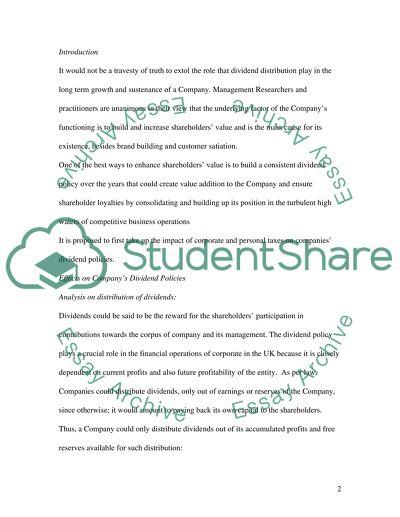Cite this document
(“Discuss to what extent the existence of corporate and personal taxes Essay - 1”, n.d.)
Discuss to what extent the existence of corporate and personal taxes Essay - 1. Retrieved from https://studentshare.org/miscellaneous/1503532-discuss-to-what-extent-the-existence-of-corporate-and-personal-taxes-could-affect-companies-dividend-policy-and-capital-structure-decisions
Discuss to what extent the existence of corporate and personal taxes Essay - 1. Retrieved from https://studentshare.org/miscellaneous/1503532-discuss-to-what-extent-the-existence-of-corporate-and-personal-taxes-could-affect-companies-dividend-policy-and-capital-structure-decisions
(Discuss to What Extent the Existence of Corporate and Personal Taxes Essay - 1)
Discuss to What Extent the Existence of Corporate and Personal Taxes Essay - 1. https://studentshare.org/miscellaneous/1503532-discuss-to-what-extent-the-existence-of-corporate-and-personal-taxes-could-affect-companies-dividend-policy-and-capital-structure-decisions.
Discuss to What Extent the Existence of Corporate and Personal Taxes Essay - 1. https://studentshare.org/miscellaneous/1503532-discuss-to-what-extent-the-existence-of-corporate-and-personal-taxes-could-affect-companies-dividend-policy-and-capital-structure-decisions.
“Discuss to What Extent the Existence of Corporate and Personal Taxes Essay - 1”, n.d. https://studentshare.org/miscellaneous/1503532-discuss-to-what-extent-the-existence-of-corporate-and-personal-taxes-could-affect-companies-dividend-policy-and-capital-structure-decisions.


